Seapost -> British Transatlantic Sea Post Offices
British Transatlantic Sea Post Offices
By Mike Dovey and Julian Jones
Just as new rules for handling mail posted on the high seas came into being [see Paquebot] certain countries began using post offices on board their vessels to sort mail during the voyage to expedite its handling at the next port of call. In the case of Great Britain, a joint sea post was installed on board seven ships of the White Star Line operated in conjunction with the U. S. Post Office. Special Sea Post cancellers were issued to cancel letters or post cards posted on the voyage.
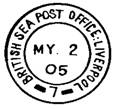
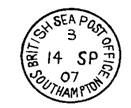
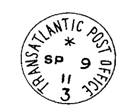
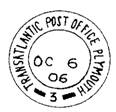 |
|||
| British Sea Post Office Liverpool 1905-07 | British Sea Post Office Southampton 1907-08 | Transatlantic Post Office 1908-14 | Transatlantic Post Office Plymouth 1905-07 |
|---|---|---|---|
White Star initially operated from Liverpool but moved some of its New York sailings to Southampton in 1907. In 1908 the cancellation was changed to omit the name of the UK originating port. British sorters also operated on ships of the US American Line which called at Plymouth on eastbound journeys, giving rise to a 'Plymouth' cancellation.
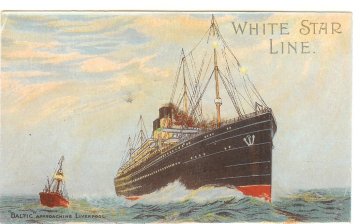
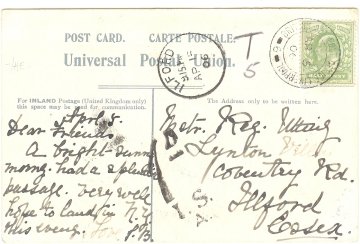
|
|
| White Star Line "RMS BALTIC" | British Sea Post Office - Liverpool 6 |
|---|---|
The British Sea Post Office - Liverpool
This cancellation was first used in 1905 for a period of two years only. The numbered hand stamps were issued to various vessels belonging to White Star Line which had to make space available to accommodate the post office team. The Liverpool cancel is a double ring circular mark and will always have an allocation number (or index) at the base of the ring.
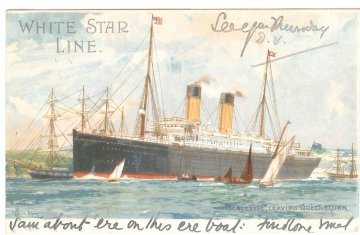
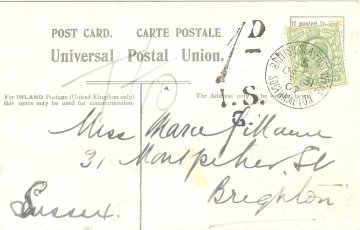
|
|
| White Star Line "RMS MAJESTIC" | British Sea Post Office - Southampton 5 |
|---|---|
The British Sea Post Office - Southampton
This cancellation is known to have been used for some fifteen months from 1907 until 1908 on White Star Line ships. While large amounts of mail were handled as each vessel sailed across the Atlantic, most of the items that survive today are from picture postcards of the vessels of the shipping line, posted on board and cancelled by the sorters. The Southampton mark is a single ring circular cancel and will always have an allocated number at the top of the inside just above the date. Following a complaint and misunderstanding regarding the USA town of Southampton (N.Y.) this cancellation had to be abandoned in favour of a new mark shown below.
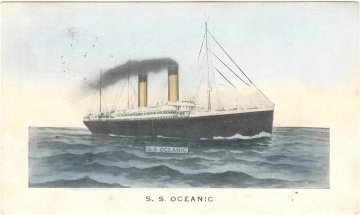
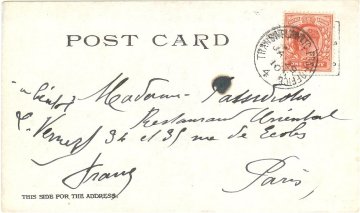
|
|
| White Star Line "RMS OCEANIC" | Transatlantic Post Office 4 |
|---|---|
The Transatlantic Post Office
This cancellation was used from around 1908 to 1914 as a replacement for the two above cancels. The British Seapost operated until August 1914 at the onset of the First World War. The single ring circular cancel, has an allocated number at the base of the mark.
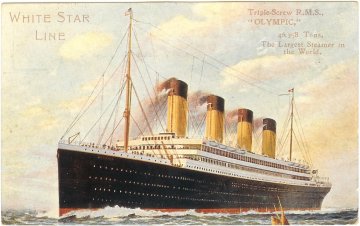
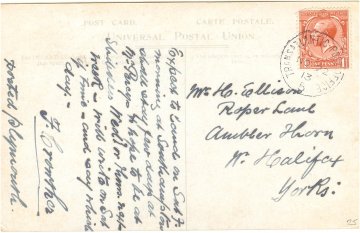
|
|
| White Star Line "RMS OLYMPIC" | Transatlantic Post Office 5 dated November 22nd 1913 |
|---|---|
The Transatlantic Post Office - Plymouth
On their eastbound run, United States Line ships bound for Southampton called at Plymouth to disembark mail for the UK. Double circle cancellers were used by British sorters on these ships during the period 1905 - 1907. The index is at the bottom of the ring.
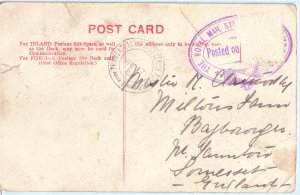
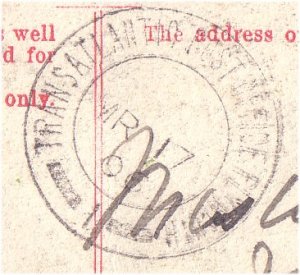
|
|
| PPC of Jamaica: "Transatlantic Post Office Plymouth / 1" (original 1d stamp removed) |
|---|
There is an strong opinion that the index numbers allocated to each British date stamp are in fact assigned to the teams of Postal sorters and not the vessel they worked on, which would explain the movement of a number from one ship to another, however it is seen that most teams seemed to stick to one particular vessel for most of the time.
U. S. Cancellers used on White Star Line ships.
These postal arrangements were undertaken in conjunction between White Star Line and the American Line with each vessel having a GB PO team and a US PO team working together. While each team had their own sea post cancellers, the GB team were not issued with Postage Due hand stamps (Taxe marks) nor MISSENT hand stamps so the US team would lend the GB team their own auxiliary hand stamps. The U. S. Post Office issued cancellers to their own staff to use on east-bound White Star Line vessels.
![US Sea Post Office canceller [Cockrill type A4] US Sea Post Office canceller [Cockrill type A4]](image2/spbsp010.gif)
![US Sea Post Office canceller [Cockrill type A5] US Sea Post Office canceller [Cockrill type A5]](image2/spbsp012.gif)
|
|
| US cancellers used with British Sea Posts |
|---|
There are a number of instances where PPC's of Cunard vessels carry one of these cancellations. It must be pointed out that Cunard Line did not participate in sea post operations, and further, did not move their operation from Liverpool to Southampton until after 1918. However, there is evidence of PPC's 'mailed' on board Cunard ships receiving Transatlantic Post Office cancellations on eastbound ships. It is suggested that Cunard pursers would walk such mail intended for UK addresses to the nearby White Star (or American Line) ships moored in New York and hand it to the pursers who would put the mail into the on board post office before sailing.
Instructions for the Conduct of Sea Post-Offices
Click this link to read about the procedures governing the joint USA - German and USA - British sea post offices, how the crew made up bags of mail for the German TPOs, and the order of distributing the bags at Plymouth, Bremen and Hamburg.
References:
The following will be found very useful:
Seaposts of the USA, by Roger Hosking, TPO & Seapost Society, 2008, ISBN No 978-0-9518726-6-6
The Transatlantic Post Office, by Roger Hosking, Oxted, June 1979.
United States Sea Post Cancellations Part I Transatlantic Routes, P Cockrill, Cockrill Series
Booklet No 54. ISBN No 947628 59 2
Postmarks and Postal Markings of Southampton 1700-1914, by Bryan Hunt, published by the author, Southampton, March 1986.

